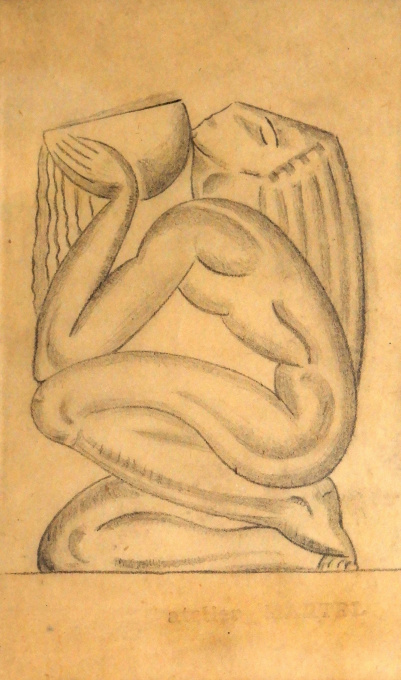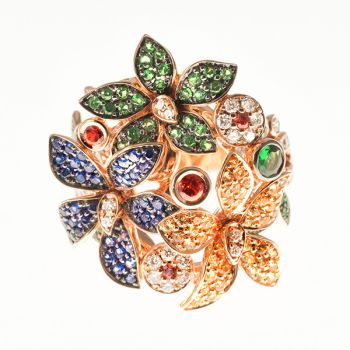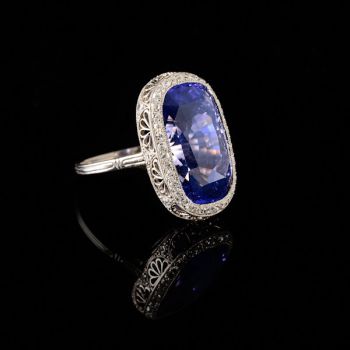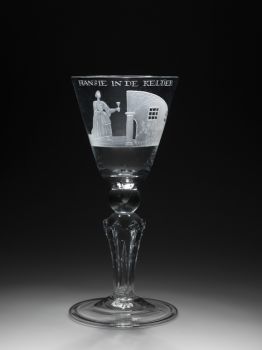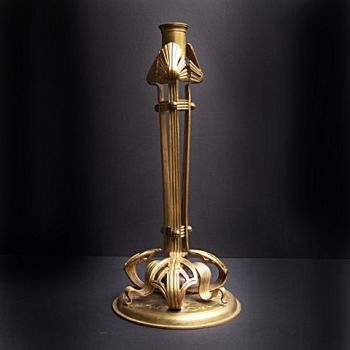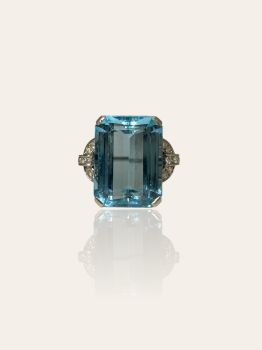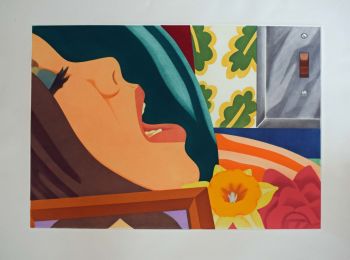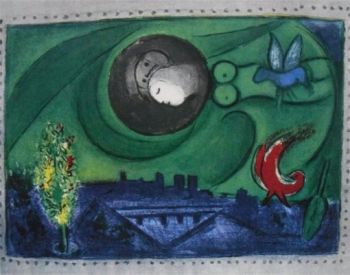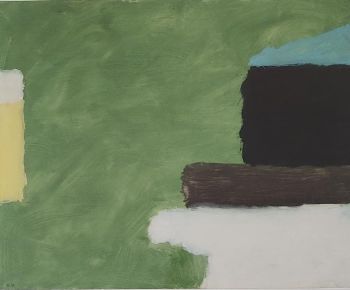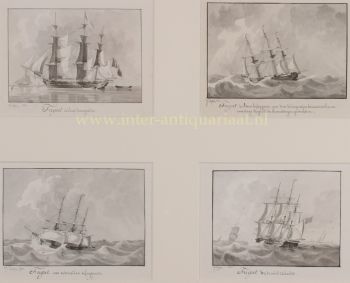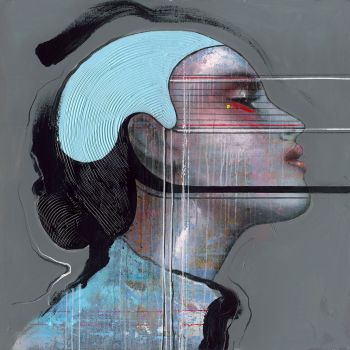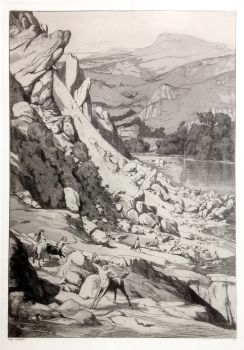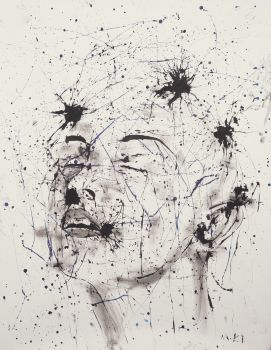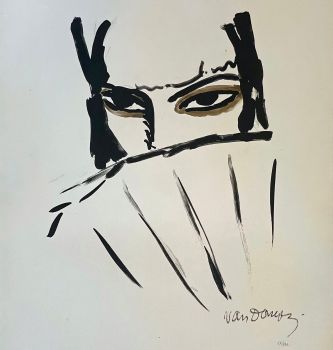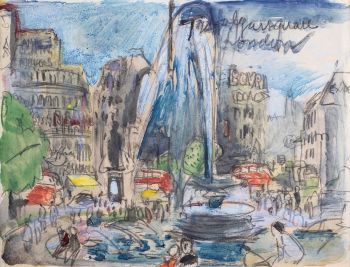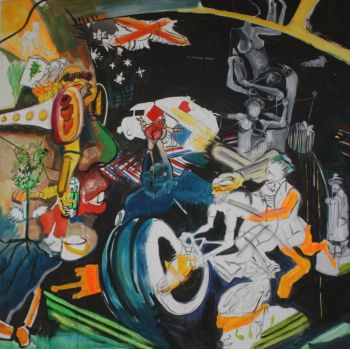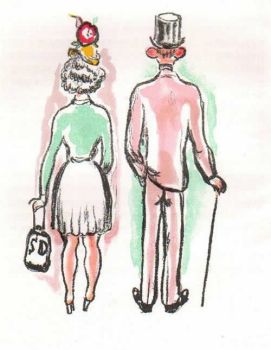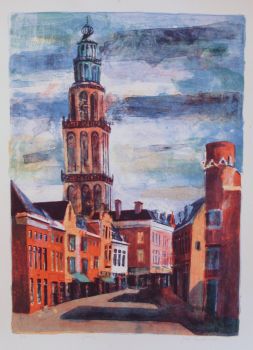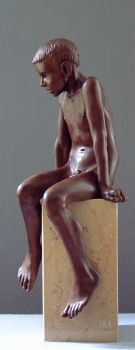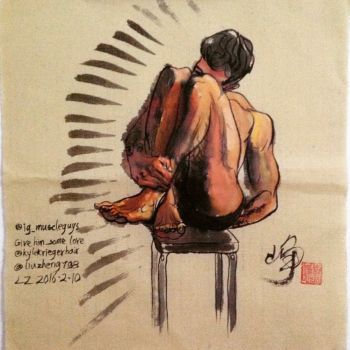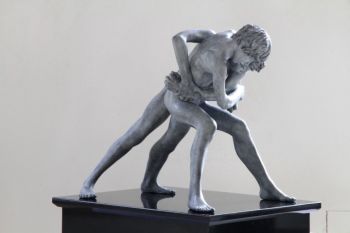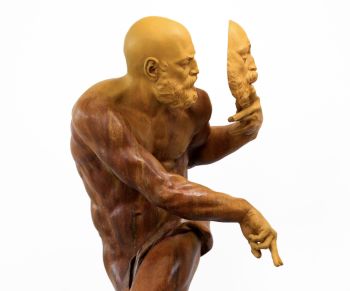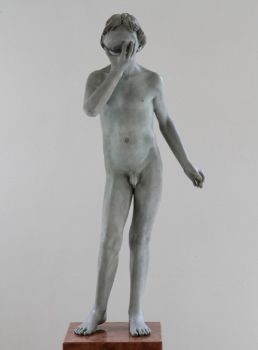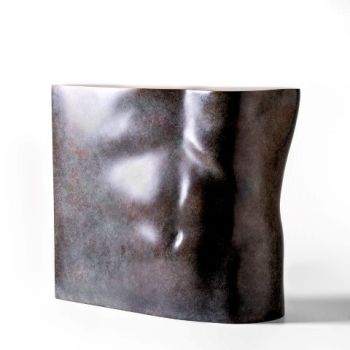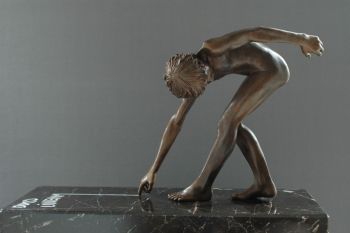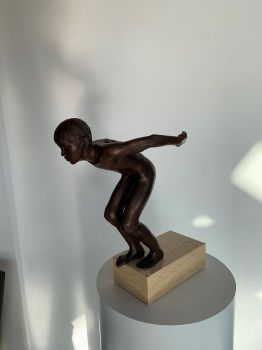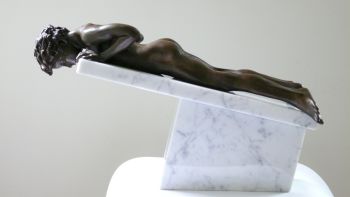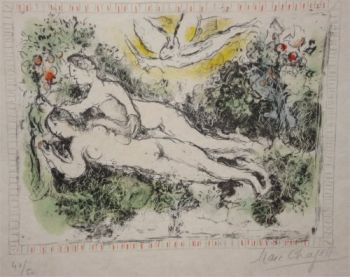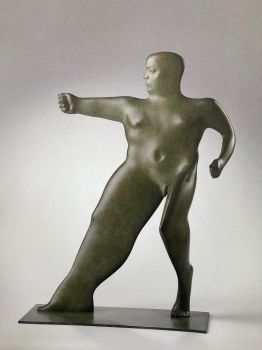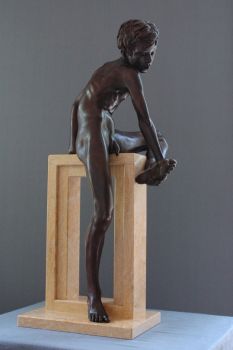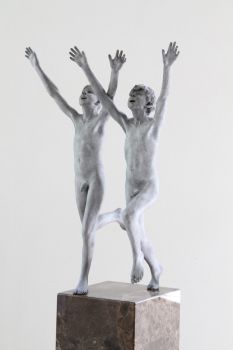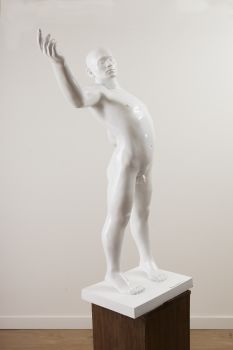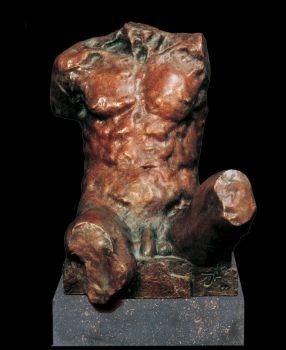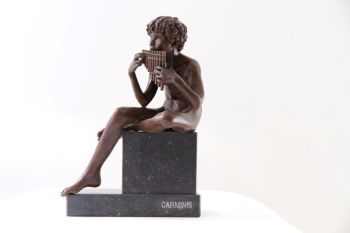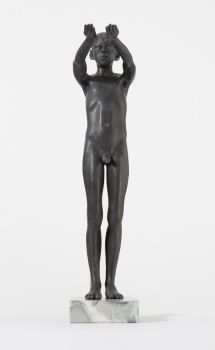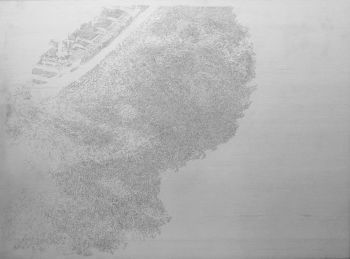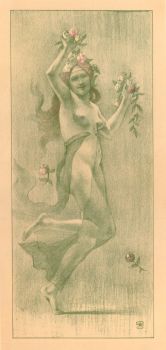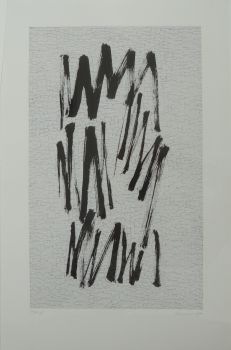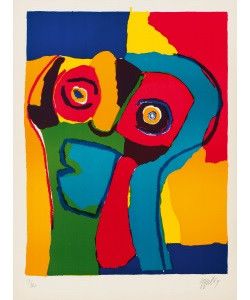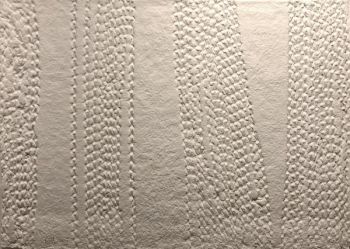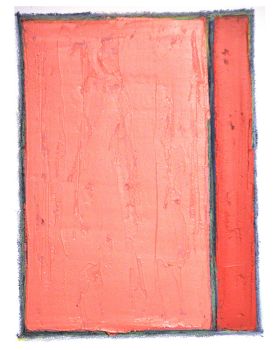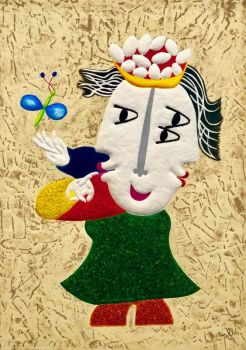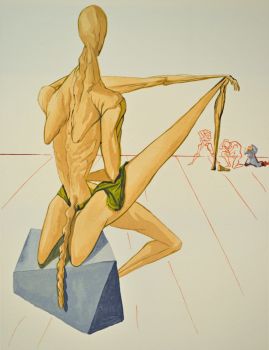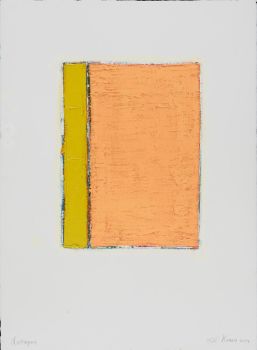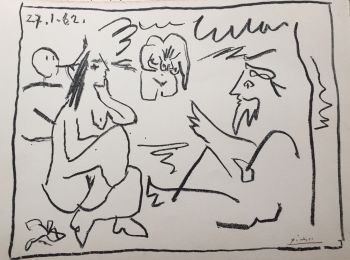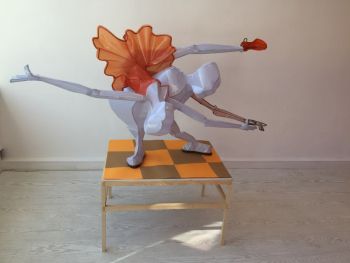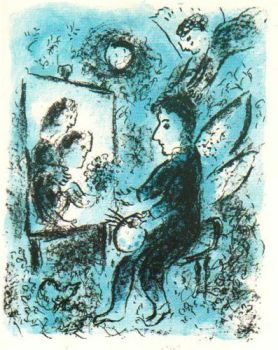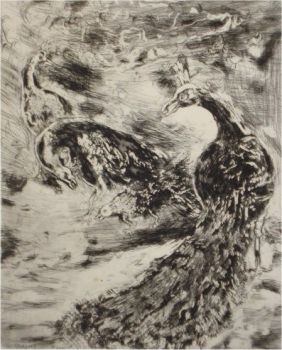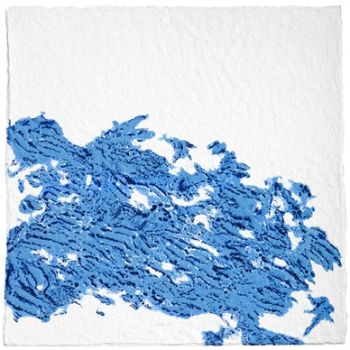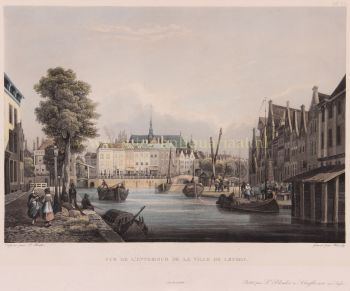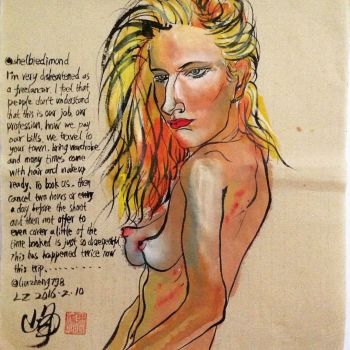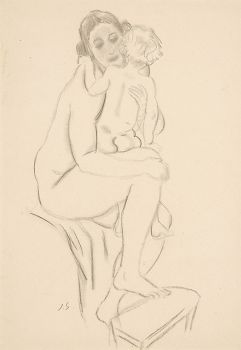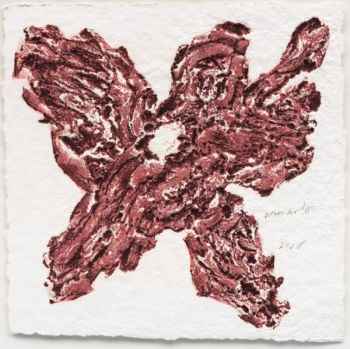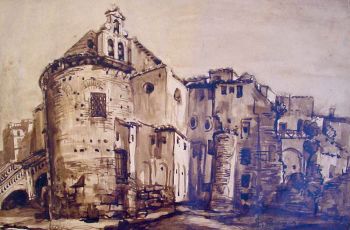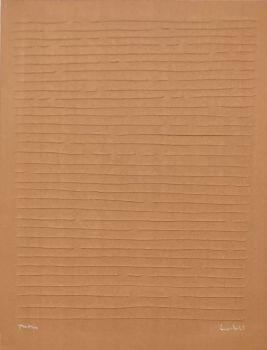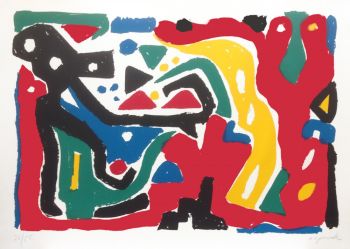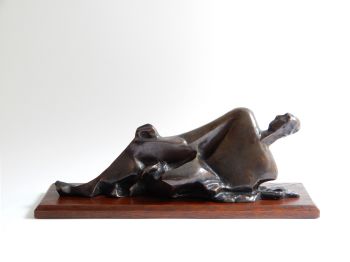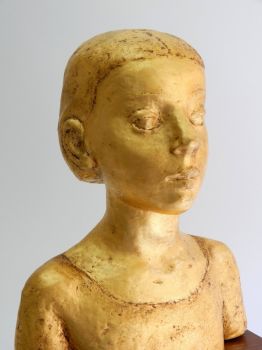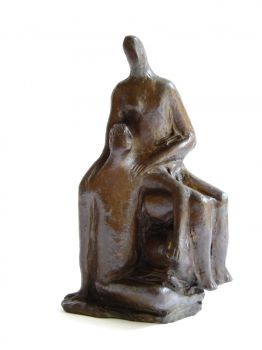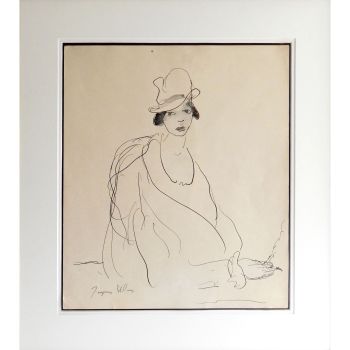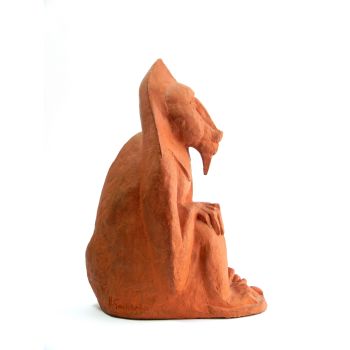'Homme agenouillé tenant une coupe' 1928 - 1932
Artista Desconocido
PapelLápiz
34 ⨯ 28 cm
ConditionExcellent
Precio a consultar
Dille Art
- Sobre la obra de arte
Beautiful pencil drawing by Jan and Joël Martel, this drawing is an elaborate design for one of the reliefs for the monument to Claude Debussy. In the period 1919-1932 the brothers worked on this monument in collaboration with the architect Jean Burkhalter (also Joël's brother-in-law). Originally it was to be placed in Saint-Germain, but it was eventually placed along Boulevard Lannes in Paris (1932). It can still be admired there. Their monument has been criticized for its modern, some say radical, designs. In 1923 they already showed a smaller version at the Salon d'Automne. The series of reliefs, for which this drawing is a design, were based on the music of Debussy, especially the work "Le Martyre de Saint-Sèbastien". The male figure that appears in almost all drawings and reliefs is based on the dancer/philosopher François Malkovsky and the dancer/photographer Jean Borlin. It is drawn on paper. The drawing is very beautiful and detailed with a beautiful stylization. This drawing was probably made in the period 1928-1932, as can be seen from the light shadows and the strong stylization. The work is not signed in pencil but has a poorly legible studio stamp "Atelier Martel". Dimensions: Drawing: Length: 14.5cm (5.71") Width: 9cm (3.54") List: Length: 34cm (13.39") Width: 28cm (11.02")
- Sobre el artista
Puede suceder que un artista o creador sea desconocido.
Algunas obras no deben determinarse por quién está hecho o por (un grupo de) artesanos. Algunos ejemplos son estatuas de la Antigüedad, muebles, espejos o firmas que no son claras o legibles, pero también algunas obras no están firmadas en absoluto.
También puedes encontrar la siguiente descripción:
•"Atribuido a …." En su opinión, probablemente una obra del artista, al menos en parte.
•“Estudio de….” o “Taller de” En su opinión, una obra ejecutada en el estudio o taller del artista, posiblemente bajo su supervisión
•“Círculo de…” En su opinión, una obra del período del artista que muestra su influencia, estrechamente asociado con el artista pero no necesariamente su alumno.
•"Estilo de …." o “Seguidor de…”. En su opinión, una obra ejecutada al estilo del artista pero no necesariamente por un alumno; puede ser contemporáneo o casi contemporáneo
•"Manera de …." En su opinión una obra al estilo del artista pero de fecha posterior
•"Después …." En su opinión, una copia (de cualquier fecha) de una obra del artista
•“Firmado…”, “Fechado…” o “Inscrito” En su opinión, la obra ha sido firmada/fechada/inscrita por el artista. La adición de un signo de interrogación indica un elemento de duda.
•“Con firma…”, “Con fecha…”, “Con inscripción…” o “Lleva firma/fecha/inscripción” en su opinión la firma/fecha/inscripción ha sido añadida por alguien que no es el artista
¿Está interesado en comprar esta obra de arte?
Artwork details
Related artworks
Artista Desconocido
Anillo eduardiano con zafiro que cambia de color1910 - 1920
Precio a consultarAns Hemke-Kuilboer Juwelier & Antiquair
1 - 4 / 12- 1 - 4 / 24
- 1 - 4 / 24
Rene Rietmeyer
TOKYO - Kudan House - January 2021 #022021
Precio a consultarEuropean Cultural Centre Collection
Emile Bernard
Sketch of the surroundings of Tonnerre1888 - 1941
Precio a consultarKunsthandel Pygmalion
1 - 4 / 24- 1 - 4 / 12

